Many of us would enjoy having our own little pet dragon–at least most of us. I think we’d all relish in the ownership of our own small monster. Luckily for us, bearded dragons are available and we’re only one purchase away from making all of our fantasy dreams come true. However, even little dragons need proper care and a proper understanding of how they function in order for them to enjoy their stays with us.
Bearded dragons have all the reptile staples, scales, split tongues, and beady eyes. But how do bearded dragons see? especially with those little black eyes? Read on to crack the mystery!
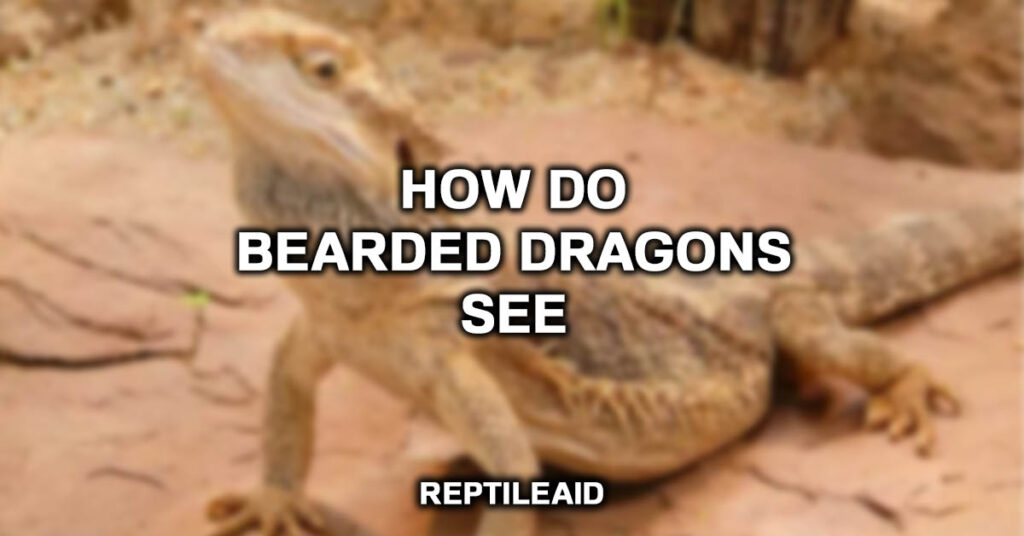
How Do Bearded Dragons See?
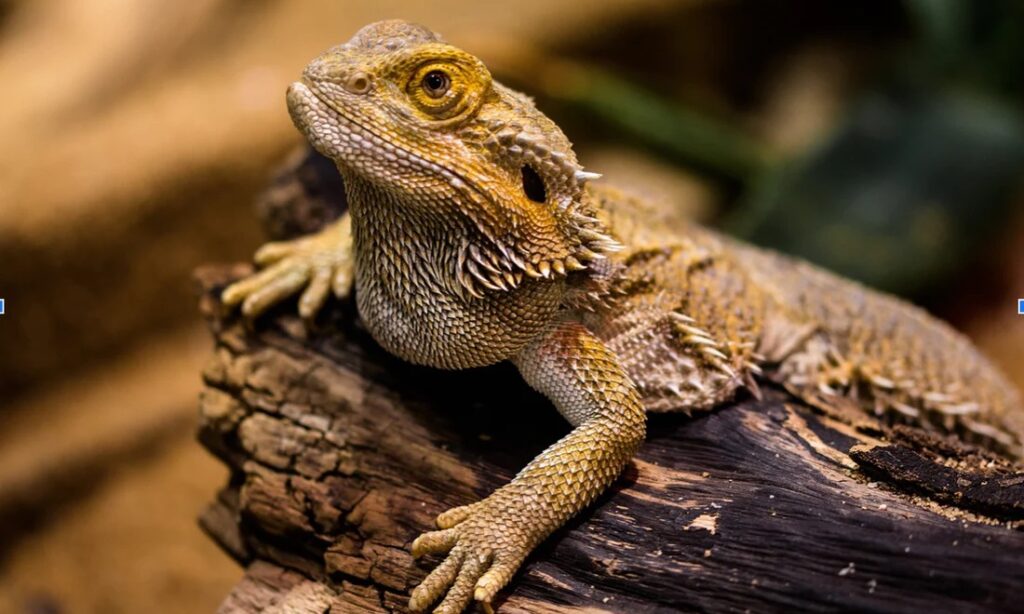
The simple answer is, well, with their eyes. Interestingly, bearded dragons actually have one more eye than we do, perched at the very top of their scaly heads. This eye doesn’t see objects like the other two but it does detect light and every subtle change in its brightness.
We are familiar with our vision being focused on what’s directly in front of us, as with any other species with two eyes relatively close together. Our range of vision is thus limited, meaning we have to physically move around to see what is beside and behind us. Bearded dragons have no such limitations.
Because of the placement of their eyes, with a wider breadth between them, bearded dragons need only to swivel their eyes to see behind, above, and in front of them. Their frontal focus is partially limited, which is why bearded dragons will tilt their heads to properly gaze at objects that are closer to them, positioning their eye to get a clearer image.
Bearded dragons tend to focus on objects that are far away from them when they are relaxed, and to see something nearer to them their eyes must adjust, which widens their pupils. After their pupils widen to take in the object more clearly, bearded dragons may then tilt their heads to get the best look possible at whatever’s in front of them.
Quick Fact: If your little dragon is lucky enough to get a window view, it will enjoy observing the bustle of life outside, even as far as the planes flying overhead. In short whatever you can see your bearded dragon can too.
However, bearded dragons notoriously struggle to gauge depth and perception, resulting in miscalculated jumps and hops, so it is best to avoid perches that are high above the ground.
They also struggle to gauge the distance between level objects, like a small gap in the ground, and will thus find it difficult to properly navigate terrain that isn’t crafted with this important aspect in mind.
Their vision can be maintained by a good, vitamin-rich diet and by keeping obstacles out of their range of vision, allowing them to take a good gander at whatever catches their fancy. Bearded dragons can see themselves in mirrors, they can see passing birds outside and they can even see different wavelengths of light.
How Important Is It For A Bearded Dragon To See?
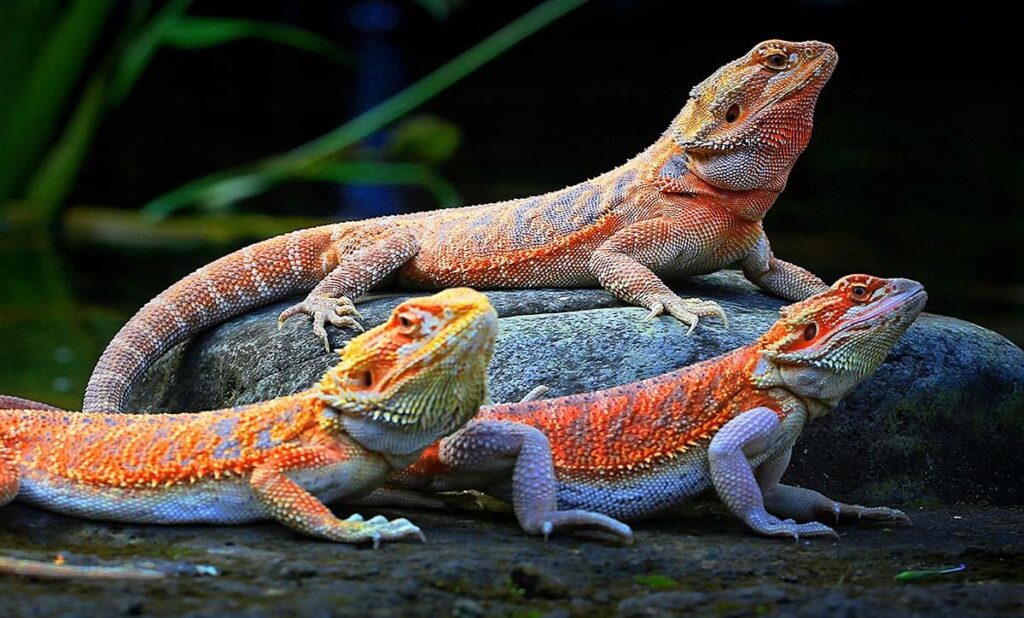
Like many animals, bearded dragons rely on their eyesight to avoid predators and capture prey. Their third eye gives them an advantage, alerting them to any potential dangers creating looming shadows over them, but they need more than just the benefits of their third eye to live well.
The large field of vision offered by their wide-set eyes allows bearded dragons to see their prey and predators from many angles, giving them the advantage of speed and precision when pouncing or evading.
One of our biggest disadvantages as a species with frontal vision is our small field of vision, limited to only what is in front of us. That means we have to do a lot of head-turning, turning around, and swiveling just to properly see what is going on around us or coming at us.
Without this disadvantage, bearded dragons are then fearsome predators and tricky prey for their predators to catch.
Bearded dragons also use their vision to gauge their surroundings, as we do. This is especially important to consider when raising a bearded dragon in captivity. For example, make sure that the room your bearded dragon will live in is free from anything alarming or scary, as this will put undue stress on your bearded dragon and make their experience unnecessarily uncomfortable.
Your bearded dragon can roughly see anything you can, so take that into consideration when organizing the room you hope to house him or her in.
Can Bearded Dragons See In Color?
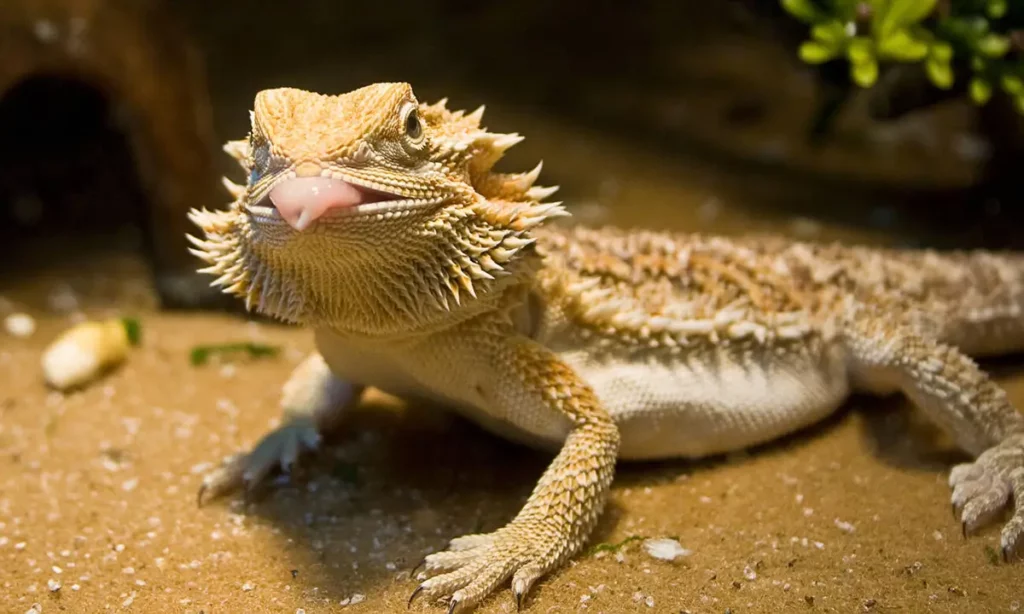
The number of colors bearded dragons can see borders on pure magic. Humans have three color receptors, and bearded dragons have four, making them tetra-chromatic. We can’t even begin to imagine what bearded dragons are able to see a capability many of us would love to experience.
The amount of extra colors bearded dragons can see is estimated to be in the millions. Imagine a world with that much color! Because of this extra-cone superpower, bearded dragons can actually see UV light. Though this is amazing, it is also one of the reasons why purchasing a proper heating lamp for your bearded dragon is vitally important.
As previously mentioned, bearded dragons both enjoy and need a good base to absorb vitamin D3 and to relax and digest food. This is why purchasing the proper heating lamp is the pinnacle of your bearded dragon’s comfort. The light must be a UVB light that illuminates light rich in vitamin D3.
When it comes time for bed, bearded dragons enjoy having a hidden hole, a dark place they can rest and feel safe in. Properly stocking your lizard’s tank with vegetation, caves, and rocks is key in creating a comfortable hiding place that your bearded dragon will feel safe scuttling to at the first sign of danger.
If these comforts are not provided, the bearded dragon will find itself in a state of stress and alarm, its fight-or-flight mode activated by the lack of safety within its living area.
Can Bearded Dragons See In The Dark?
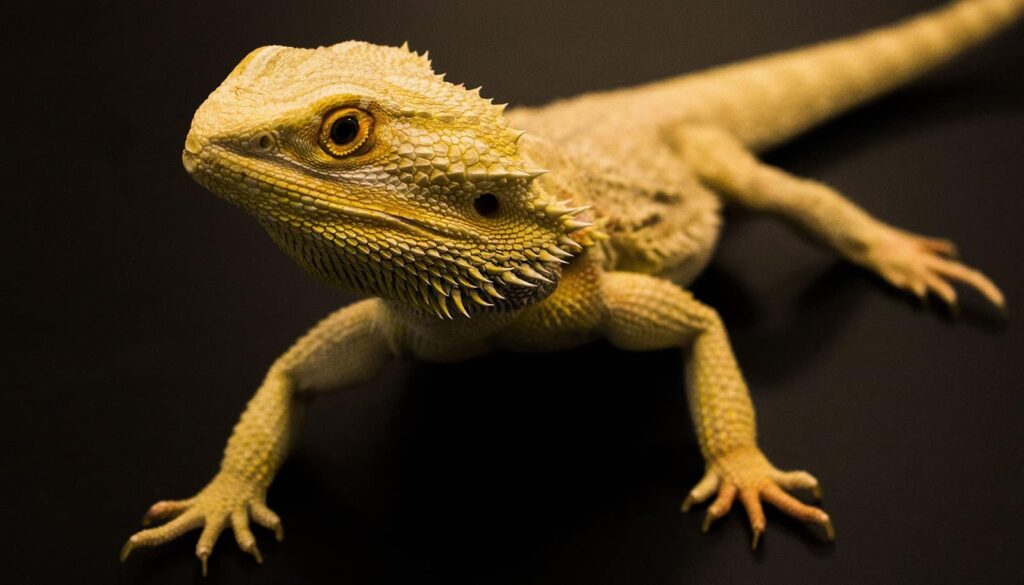
This is the one area where bearded dragons look a little more ordinary, like you and I. Though their vision capabilities are amazing, their pupils function like ours, meaning that bearded dragons will struggle to see in the dark about as much as we do. Bearded dragons are not nocturnal, and thus they have not been designed with night vision in mind.
The light source around a bearded dragon, perhaps a UV light in captivity, governs their sleep cycle just like the sun governs ours. When the sun sets and night falls, our biological clock strikes ‘sleepy time’, and melatonin is released, prompting us to head under the covers.
This cycle works the same in bearded dragons, which is why it is vital to turn off their light source at the same time every night and to turn it back on in the morning, again at the same time. Doing this will create a predictable sleep/wake cycle for your bearded dragon, making their time with you all the more pleasant and comfortable.
Interestingly, a bearded dragon’s third eye will still be able to function in darkness. It is much more sensitive to light than its other two eyes, meaning it can detect the slightest changes in light and shadows. Again, lighting is extremely important in creating a comfortable environment for a bearded dragon.
Quick Fact: Bearded dragons love a good basking session, an important activity that allows their food to safely and comfortably digest. Without proper, comfortable lighting, your bearded dragon will not feel safe basking and it will experience an unnecessary level of stress along with an uncomfortable bout of indigestion.
Even in low visibility, the light quality around a bearded dragon will guide it home, to prey, or away from a predator. Their third eye helps bearded dragons get around easily, like a GPS system rooted in the top of their heads. The third eye orients them in relation to the sun, allowing them to locate their home as if the path was already programmed into their brains.
Like snakes, bearded dragons also use their tongues to see what their eyes cannot, like temperature and smells. They will often lick their owners and just about anything else they can, much like a scaly little puppy.
What Colours can a bearded dragon See?
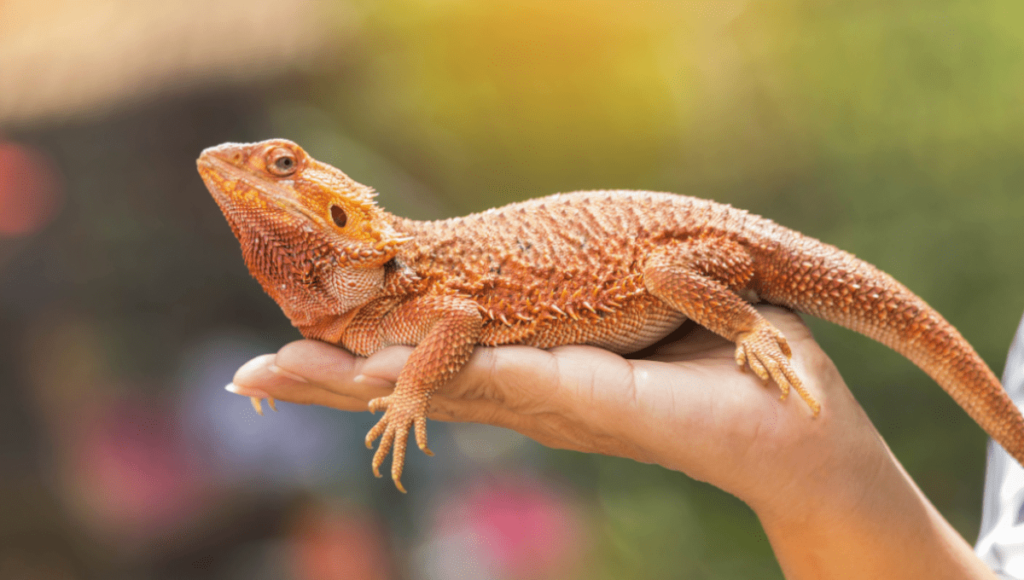
Bearded dragons have very good vision and can see a wide range of colors. This is because they have a third eyelid that helps them filter out light and glare, allowing them to see clearly. They can see blues, greens, and yellows very well, but they may not see reds as well.
This is because reds are at the opposite end of the light spectrum to yellows and greens, so they may not be as bright as bearded dragons. However, this does not mean that they cannot see reds at all, it just means that they are not as clearly visible as other colors.
Bearded Dragons are diurnal reptiles, meaning they are active during the day and inactive at night. They possess a visual spectrum to judge distances (distance perception) and movement (motion perception).
Being an omnivorous species, their diet consists of both plants and animals. Insects make up the main component of their animal diet, but they will also consume other small animals such as lizards, young rodents, and baby birds.
What colors can a Bearded Dragon see? The third eyelid is what gives Bearded Dragons their excellent vision. This membrane helps to filter out light and glare, which gives them very good depth perception. They do not yet know the actual science behind it all, but scientists have found that they can differentiate between colors.
Their color detection is at its best in the blue/green range and more limited for reds, oranges, and purples.
How Do Bearded Dragons View Their Owners?
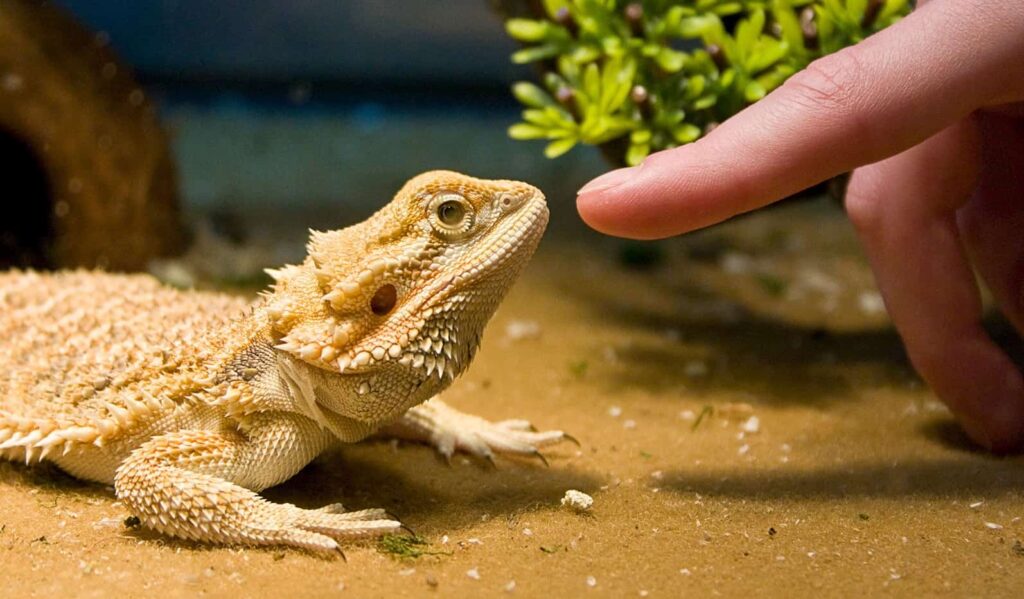
Having pets require not just meeting them adequate nutrition as well extra care and affection. Pets not being well taken care of can feel distant to the owners and sometimes cause harm to their owners. It is essential to choose a pet when you think you are capable of giving them their needs.
Just like any other pets, bearded dragons also like affection. It is a reptile famous for being a pet for it shows great affection to its owner.
How do bearded dragons view their owners? Depending on the affection the owners give to their pet dragon, the pet knows how to recognize its owner very well.
As long as when you try to pet and show affection to the pet, and it does not show any aggressive behavior, it is calm, then, it recognizes you as one of the people who brings comfort and gives enough affection to the pet.
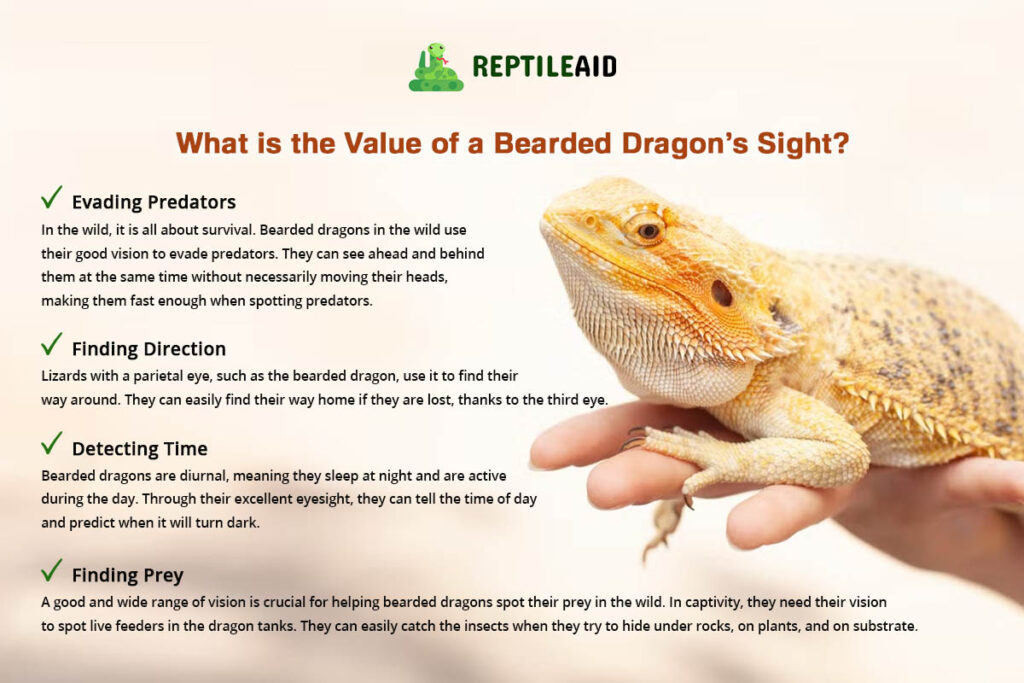
Conclusion
Bearded dragons see with three eyes, and better than we humans could ever imagine. They can see millions more colors than our puny eyes, and with an extremely wide field of vision, bearded dragons are one very tricky lizard to surprise. Like us, bearded dragons rely on light to determine their wake and sleep cycle, and they enjoy basking in warm UV light just as much as we do.
Any further questions on these magical little dragons? Comment them down below!
Bearded dragons can see the world around them clearly and with an amazingly large field of vision. They see millions more colors than humans can. though their nighttime vision isn’t quite as remarkable.
